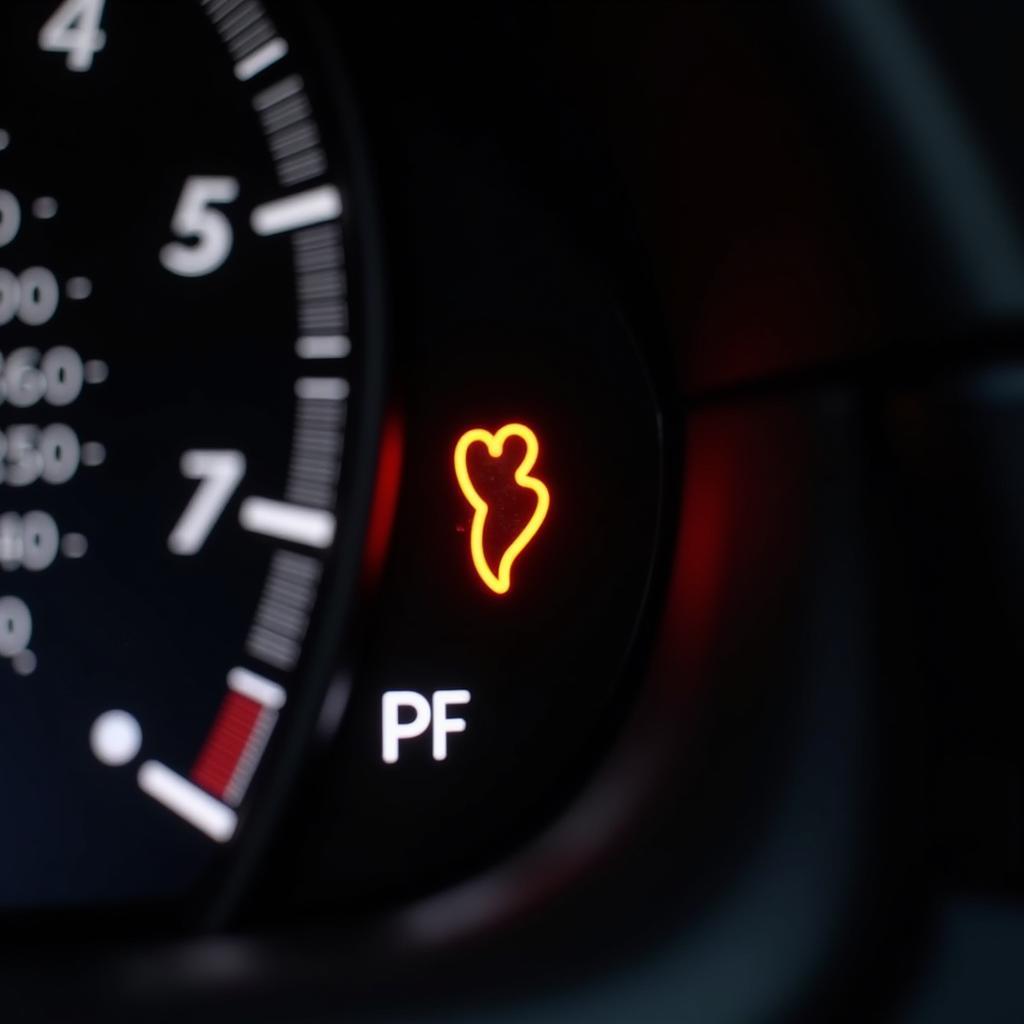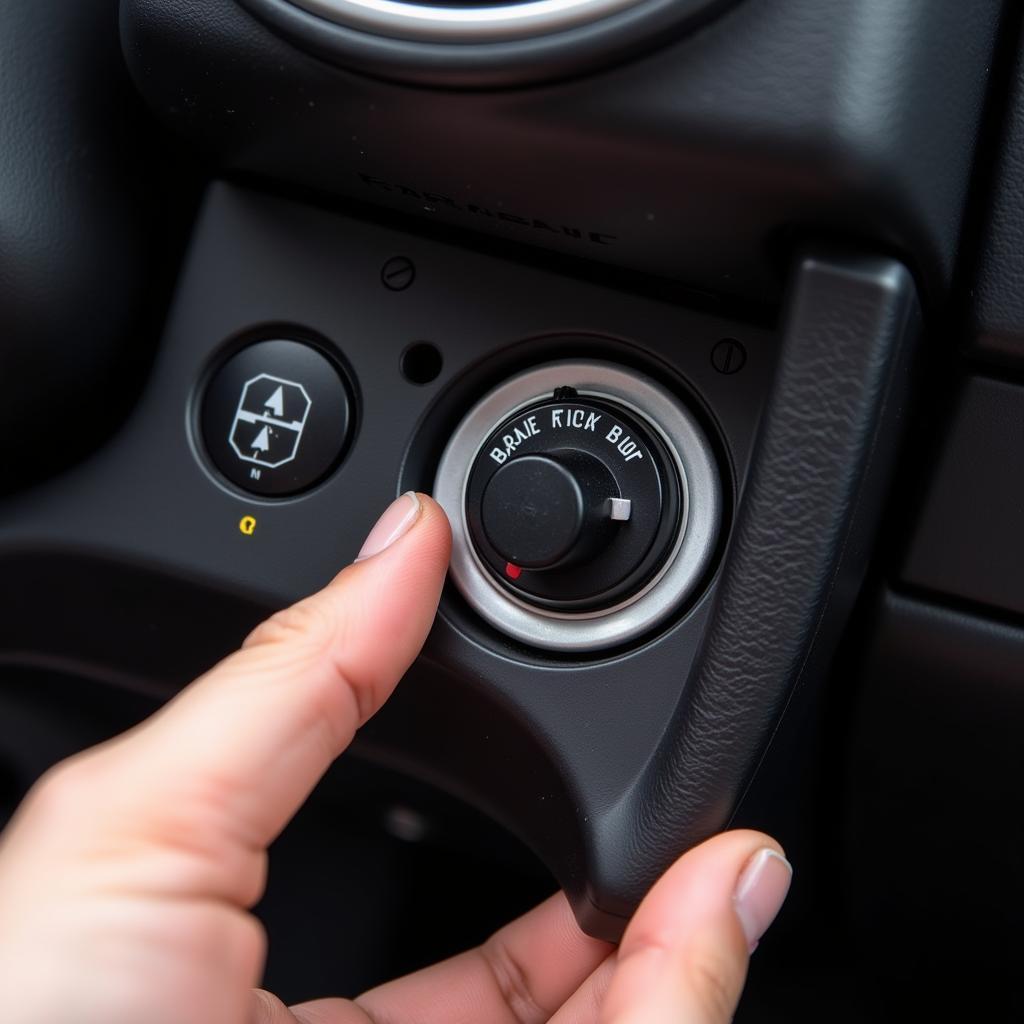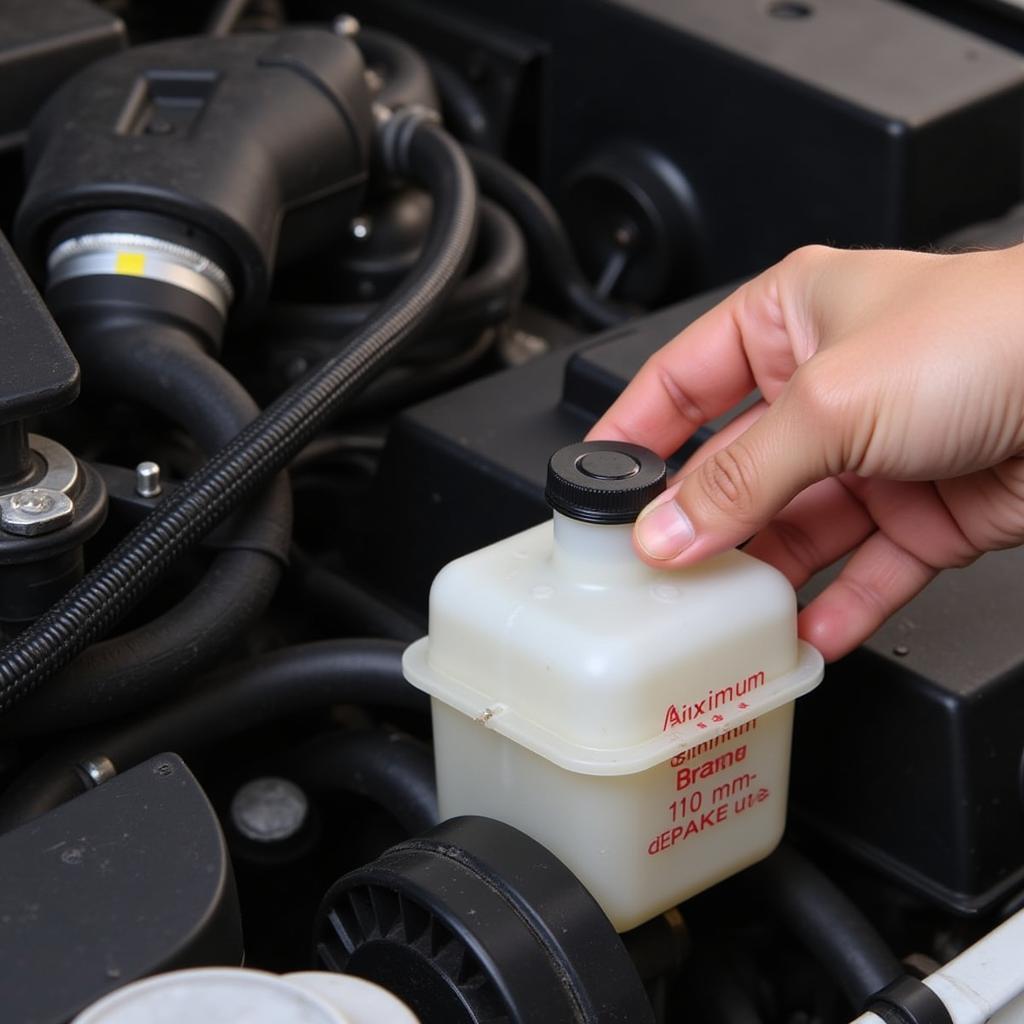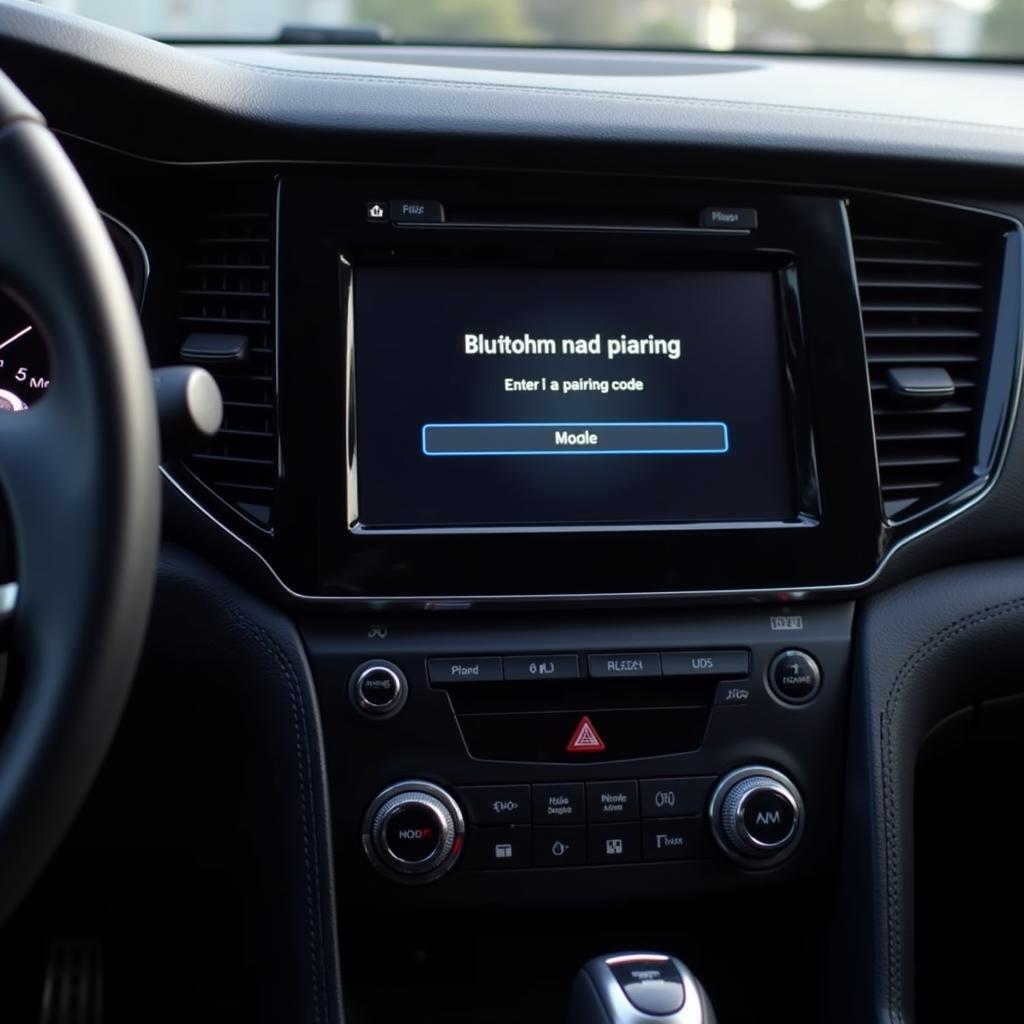The dreaded brake pad warning light on your BMW dashboard can be a nerve-wracking experience. It signals potential issues with your braking system, a critical component for your safety on the road. This article dives into the common causes of a BMW brake pad warning light, how to diagnose the problem, and the steps involved in resolving it.
Understanding Your BMW Brake Pad Warning System
BMW vehicles are equipped with a sophisticated sensor system designed to monitor the condition of your brake pads. When the brake pad material wears down to a certain level, the sensor triggers the warning light on your dashboard. This system ensures you’re alerted about brake pad wear before it compromises braking performance.
Common Causes of a BMW Brake Pads Warning Light
While worn brake pads are the most common culprit, several other factors can trigger the warning light:
- Worn Brake Pad Sensors: The sensors themselves can wear out or become damaged over time, leading to a false warning.
- Low Brake Fluid: Brake fluid is essential for transmitting hydraulic pressure to engage your brakes. Low brake fluid levels can trigger the warning light, often indicating a leak in the system.
- Faulty ABS System: A malfunctioning Anti-lock Braking System (ABS) can also illuminate the brake pad warning light.
- Electrical Issues: Occasionally, electrical issues, such as a short circuit or faulty wiring, can cause the warning light to come on.
 BMW Dashboard with Brake Pad Warning Light Illuminated
BMW Dashboard with Brake Pad Warning Light Illuminated
Diagnosing the Problem: What to Do When the Light Turns On
If your BMW brake pad warning light illuminates, it’s crucial to address the issue promptly. Here’s a step-by-step guide on how to diagnose the problem:
- Check Your Brake Pads: Begin by visually inspecting your brake pads. Look for signs of significant wear. If you notice the pad material is thin or non-existent, it’s time for a replacement.
- Inspect Brake Fluid Levels: Open the hood and locate the brake fluid reservoir. Check the fluid level, ensuring it falls within the minimum and maximum markers. Low brake fluid often points to a leak.
- Scan for Fault Codes: Use a compatible OBD-II scanner to read any stored fault codes in your BMW’s computer system. These codes can pinpoint the specific area triggering the warning light.
 Mechanic Inspecting BMW Brake Pads
Mechanic Inspecting BMW Brake Pads
Resolving the Issue: Brake Pad Replacement and Other Solutions
Once you’ve identified the root cause, take the appropriate action to resolve the issue:
- Brake Pad Replacement: If your inspection reveals worn brake pads, replace them immediately. It’s crucial to replace both pads on the same axle, even if only one appears worn. For more information on BMW X5 brake lining warnings, see our dedicated article on BMW X5 brake lining warning.
- Address Brake Fluid Leaks: If you discover a brake fluid leak, address it immediately. This might involve repairing or replacing damaged brake lines, calipers, or other components. Once repaired, bleed the brake system to remove air bubbles.
- Consult a Qualified Mechanic: If you’re uncomfortable diagnosing or repairing brake issues yourself, seek assistance from a qualified BMW mechanic. They have the expertise and tools to accurately diagnose and repair complex brake problems, including issues with the ABS system.
Preventive Maintenance: Keeping Your BMW Brakes in Top Condition
Regular brake system maintenance is essential for optimal performance and safety. Follow these tips to keep your BMW brakes in top shape:
- Regular Brake Inspections: Have your brakes inspected by a qualified mechanic at least once a year or every 12,000 miles.
- Timely Brake Fluid Flush: Flush and replace your brake fluid every 2 years or as recommended by your BMW’s service schedule.
- Quality Brake Pads and Rotors: Opt for high-quality brake pads and rotors that meet BMW’s specifications.
 Checking BMW Brake Fluid Reservoir
Checking BMW Brake Fluid Reservoir
FAQs: Common Questions about BMW Brake Pad Warning Lights
Q: Can I still drive my BMW with the brake pad warning light on?
A: While it’s not advisable, you can drive a short distance with the brake pad warning light on. However, it’s crucial to address the issue immediately as driving with worn brake pads significantly reduces stopping power and can lead to rotor damage.
Q: How much does it cost to replace BMW brake pads?
A: The cost of replacing BMW brake pads can vary depending on the model, year, and the type of brake pads used. Expect to pay between $150 to $400 per axle for parts and labor.
Q: Do I need to replace my brake rotors when I replace my brake pads?
A: It’s not always necessary to replace brake rotors with every pad replacement. However, if your rotors are significantly worn, damaged, or have reached their minimum thickness, replacement is essential.
Conclusion
Ignoring a BMW brake pads warning light can compromise your safety and lead to costly repairs. By understanding the common causes, following the diagnostic steps, and taking prompt action, you can ensure your BMW’s braking system remains in optimal condition.
If you’re experiencing issues with your BMW’s brake pad warning light and need assistance, don’t hesitate to contact a qualified BMW mechanic or visit our website for more helpful articles on BMW brake warning 2012 3 series and brake warning light is on inspection.



